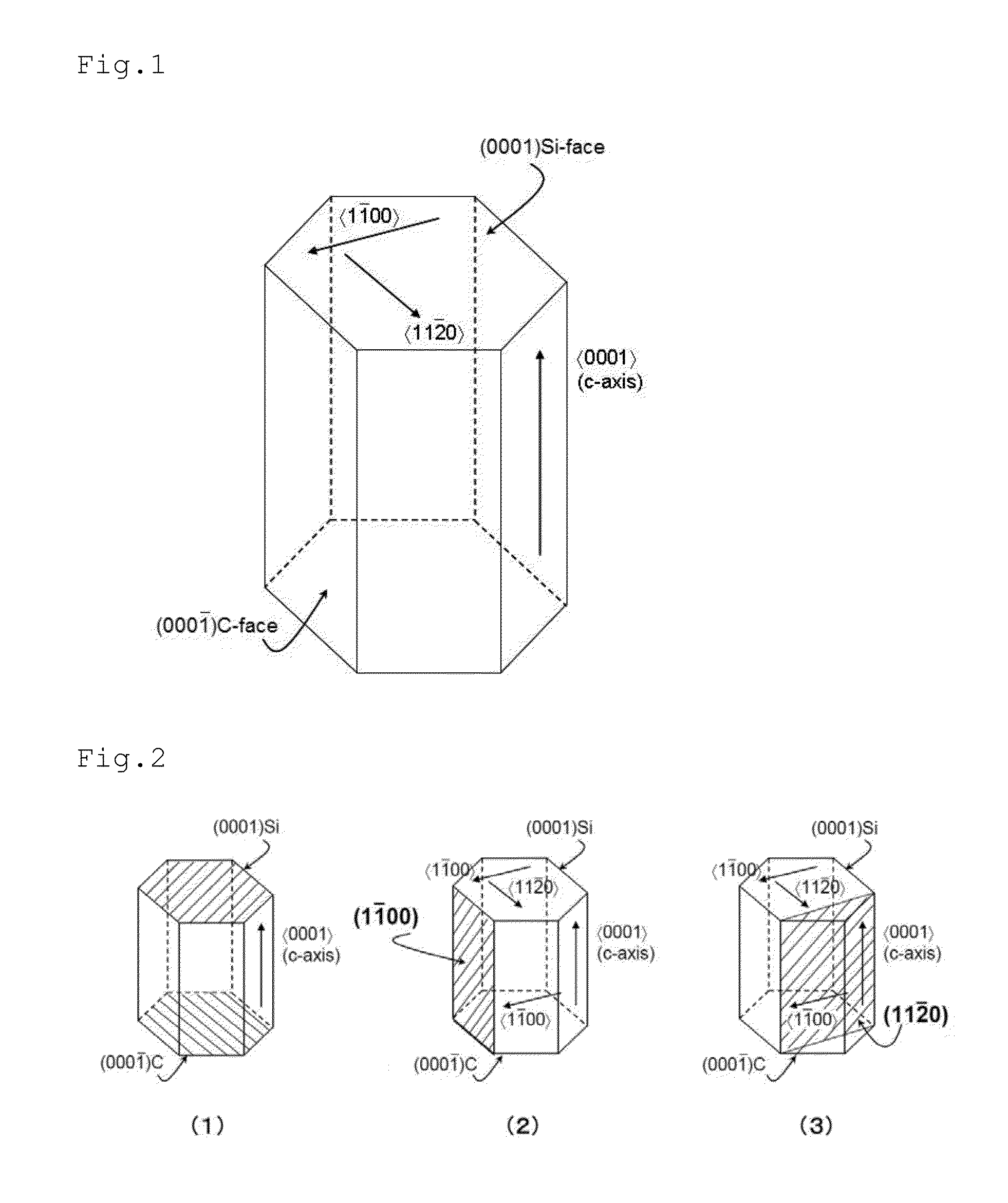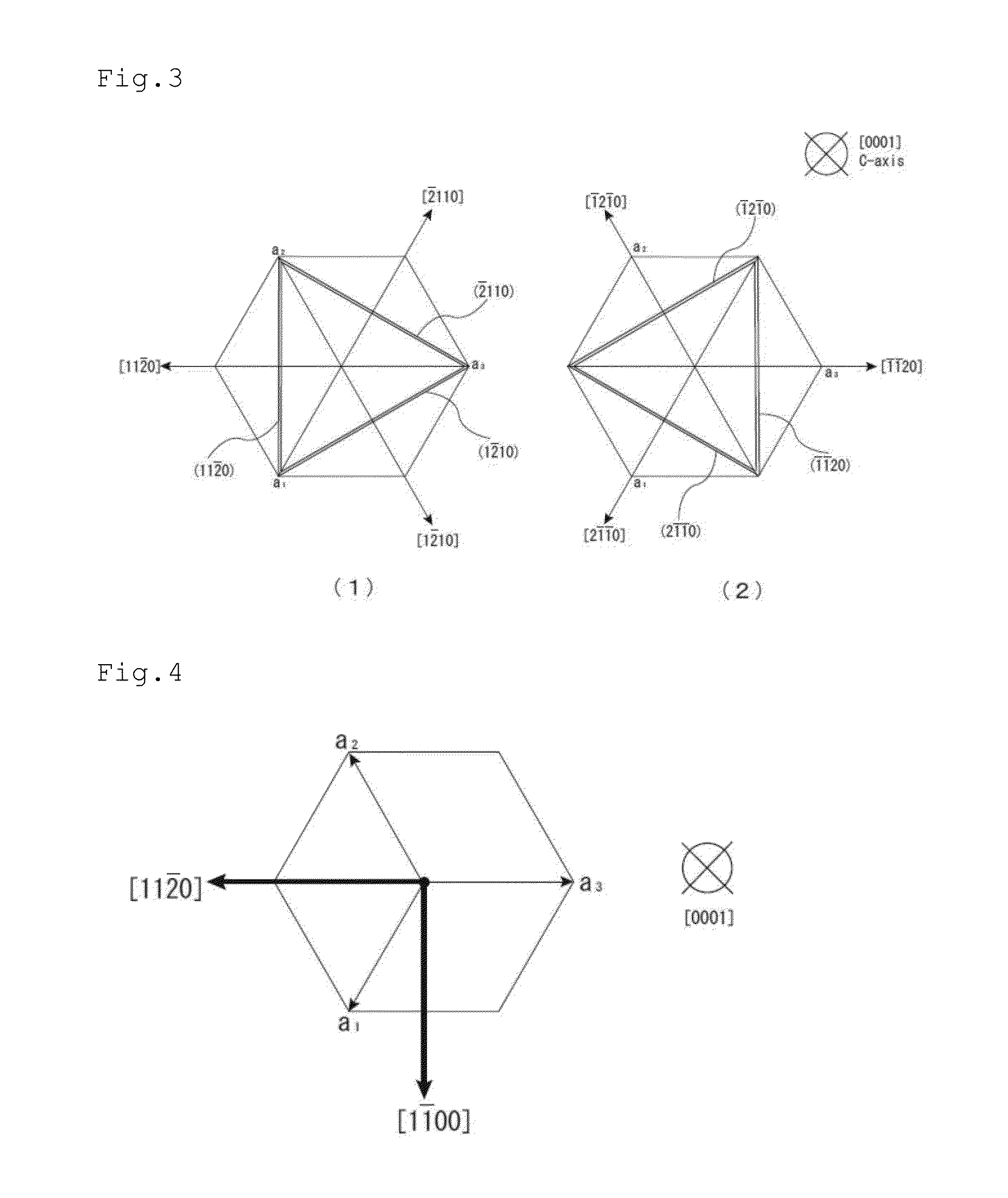SiC semiconductor element
a semiconductor element and semiconductor technology, applied in the field of semiconductor elements, can solve the problems of low channel mobility, increased power consumption, low channel mobility of sic mosfets, etc., and achieve the effects of reducing threshold voltage, dramatically improving channel mobility, and reducing on-resistan
- Summary
- Abstract
- Description
- Claims
- Application Information
AI Technical Summary
Benefits of technology
Problems solved by technology
Method used
Image
Examples
embodiment 1
[Embodiment 1]
[0080]A first embodiment shows results of a device property evaluation made by fabricating a trenched MOSFET (UMOSFET) device and forming a trench having approximately vertical side walls in an SiC substrate on the (000-1) C-plane having various off-angles.
[0081]FIG. 13 schematically shows the structure of the trenched MOSFET (UMOSFET) fabricated this time. For various off-angles, the trenched MOSFET was fabricated by forming a trench having approximately vertical side walls in an SiC substrate on the (000-1) C-plane, in which the current flows in only one side of the trench side walls.
[0082]Substrates fabricated using the (000-1) plane had their respective different off-angles of 0 degrees (i.e. on-axis), 4 degrees in the [−1-120] direction, 8 degrees in the [−1-120] direction, 15 degrees in the [−1-120] direction, and 8 degrees in the [1-100] direction. The trench was formed in a rectangular shape such that adjacent side walls were at right angles to each other and t...
PUM
 Login to View More
Login to View More Abstract
Description
Claims
Application Information
 Login to View More
Login to View More - R&D
- Intellectual Property
- Life Sciences
- Materials
- Tech Scout
- Unparalleled Data Quality
- Higher Quality Content
- 60% Fewer Hallucinations
Browse by: Latest US Patents, China's latest patents, Technical Efficacy Thesaurus, Application Domain, Technology Topic, Popular Technical Reports.
© 2025 PatSnap. All rights reserved.Legal|Privacy policy|Modern Slavery Act Transparency Statement|Sitemap|About US| Contact US: help@patsnap.com



